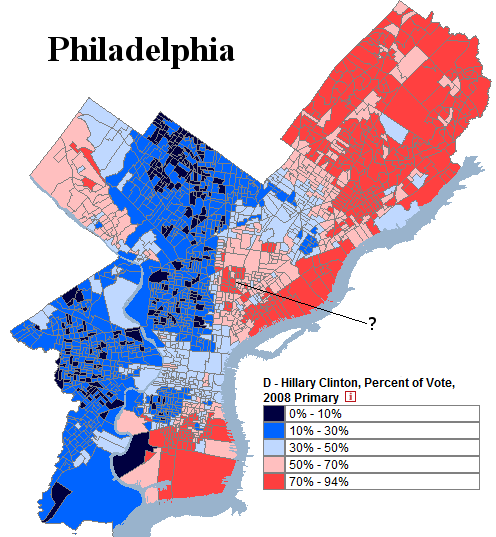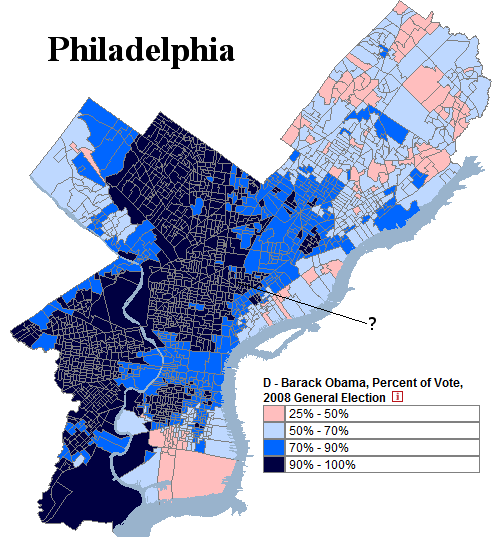• CT-Sen: Following his loss in the CT-Gov primary after leading the polls almost all the way, I hadn’t heard much discussion about Ned Lamont making a repeat run against Joe Lieberman for the 2012 Senate race. Lamont confirms that, saying he’s “strongly disinclined” to try again.
• FL-Sen: Here’s a dilemma for temp Sen. George LeMieux, as he gave his farewell speech from the Senate floor. Acknowledge the man without whom he’d be utterly unknown and thus not in a position to run again for Senate in 2012… or invoke said man, whose name is utterly mud in Florida GOP circles, thus reminding everyone of those connections that can only hurt in a 2012 primary? In the end, basic human decency prevailed, and LeMieux thanked Charlie Crist for appointing him.
• ME-Sen: This is pretty big news, as everyone has been treating newly-elected Gov. Paul LePage’s imprimatur as a make or break for Olympia Snowe’s hopes in a GOP primary in 2012. LePage, of course, was the tea party choice in the primary, and his say-so would go a long way toward either encouraging or discouraging a teabagger challenge to Snowe. LePage just came out with a statement of support for Snowe in the primary, saying he’d back her in the face of a possible primary challenge.
• MO-Sen: Sarah Steelman continues to rack up support from the GOP’s far-right, as she girds for a possible GOP primary showdown against ex-Sen. Jim Talent. Steelman met with Jim DeMint, the Senate’s de facto kingmaker of the tea party set, and those involved expect DeMint’s Senate Conservative Fund to back Steelman shortly (which would be his first endorsement of the 2012 cycle).
• PA-Sen: Moran gets brain? Perhaps sensing the steep uphill climb of a challenge against the Casey name brand in Pennsylvania in a presidential year, random rich guy John Moran has done an about-face on a threatened possible Senate run that first emerged last week. Another central Pennsylvanian, though, state Sen. Jake Corman, seems to be interested in taking on Bob Casey Jr.
• UT-Sen: In case there was any doubt about Orrin Hatch running again — in his 70s and facing a likely difficult primary/convention — well, he is. He released a statement this morning saying “I intend to run, and I intend to win.” That comes in the face of the formation of a new leadership PAC by Rep. Jason Chaffetz, which would likely point to stepped-up fundraising efforts in the face of a intra-party challenge. (Hatch is sitting on $2.32 million CoH, while Chaffetz has $179K. If the targeted audience isn’t all Utahns but a few thousand nuts at the state convention, though, money is less of an issue.)
• IN-Gov: Soon-to-be-ex-Sen. Evan Bayh is issuing something of a timeline regarding whether or not he runs for his old job as Governor again in 2012. Bayh says he’ll make a decision by the end of the year, and is saying it’s a “possibility but [not] a probability.” (Rep. Baron Hill and Evansville mayor Jonathan Weinzapfel are other fallback options.)There’s no timeline, though, from Rep. Mike Pence, who probably would be the strongest candidate the GOP could put forth, but seems more interested in going straight for the Presidency. One GOPer who isn’t waiting for Pence’s decision is Lt. Gov. Becky Skillman, who has moved forward on fundraising although she hasn’t officially declared anything. Soon-to-be-Rep. Todd Rokita warns not to underestimate Skillman.
• MN-Gov: This is kind of a moot point in view of his concession this morning, but in case you’re wondering what suddenly motivated Tom Emmer to drop his challenge to Mark Dayton and move on, this was probably the last straw: yesterday the Minnesota Supreme Court denied his petition asking for all counties to perform a reconciliation of number of voters with number of ballots cast. With the recount already done, the reconciliation would have been the only practical way of even stringing this thing out for a while longer, let alone finding an extra 9,000 votes.
• MO-Gov: In marked contrast to the recent PPP poll giving Jay Nixon a clear edge, Republican Lt. Gov. Peter Kinder (now looking more like a candidate than ever) is pointing to an internal poll by American Viewpoint taken way back in late September that gives him a 47-38 lead over Nixon. The poll finds Nixon still popular, though, with 51% approval.
• ND-Gov: Today was the first day on the job for North Dakota’s new Governor, ex-Lt. Gov. Jack Dalrymple, who took over as John Hoeven resigned in order to join the Senate soon. Hoeven is the first-ever North Dakota Governor to resign voluntarily. Taking over as Lt. Gov. is ex-US Attorney Drew Wrigley. Dalrymple will be watched carefully as to what happens in 2012: he could either run for election to a full term, or move over to a Senate run against Kent Conrad.
• MN-08: Newly-elected Rep. Chip Cravaack will have one of the tougher re-elects of any of the new House Republicans (he’s in a D+3 district that includes the Dem stronghold of Duluth), but one of the bigger-name Dems in the district is saying he won’t be the challenger. State Sen. Tom Bakk (one of the 5,589,358,587,568,120 people who ran for the DFL gubernatorial nomination this year) is staying where he is, especially since he’s about to become minority leader.
• GA-St. House: One more D-to-R party switcher to report, and it’s a fairly big name within the confines of the Georgia legislature: Doug McKillip, who was previously #2 among Democrats. Interestingly, he’s not from a dark-red rural district but represents the college town of Athens, and he says he’ll be better able to agitate for the University’s needs from within the majority… although, that, of course, would depend on getting re-elected again from that (presumably blue) district.


